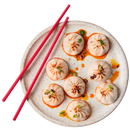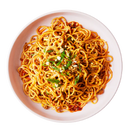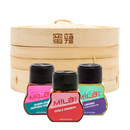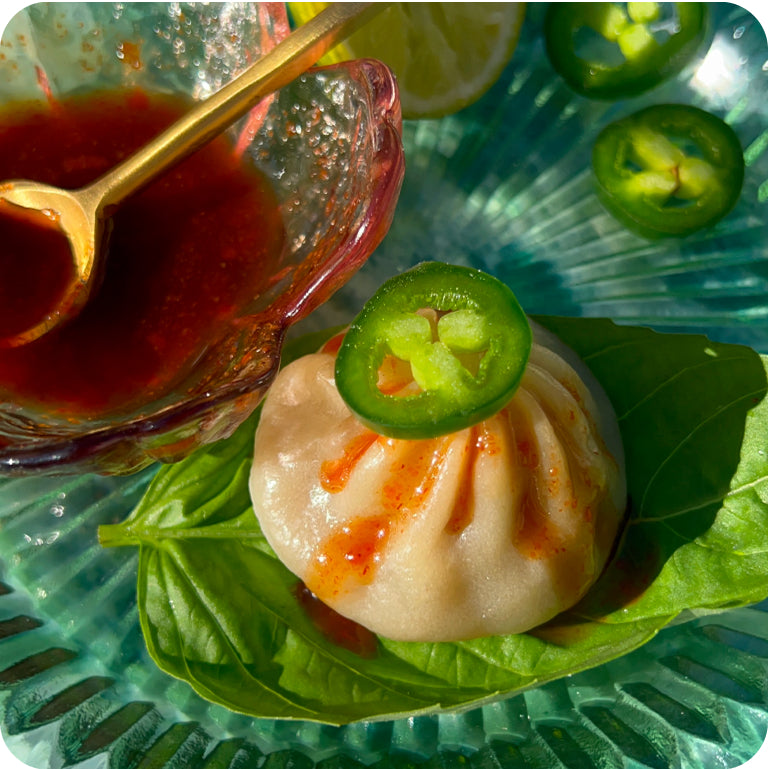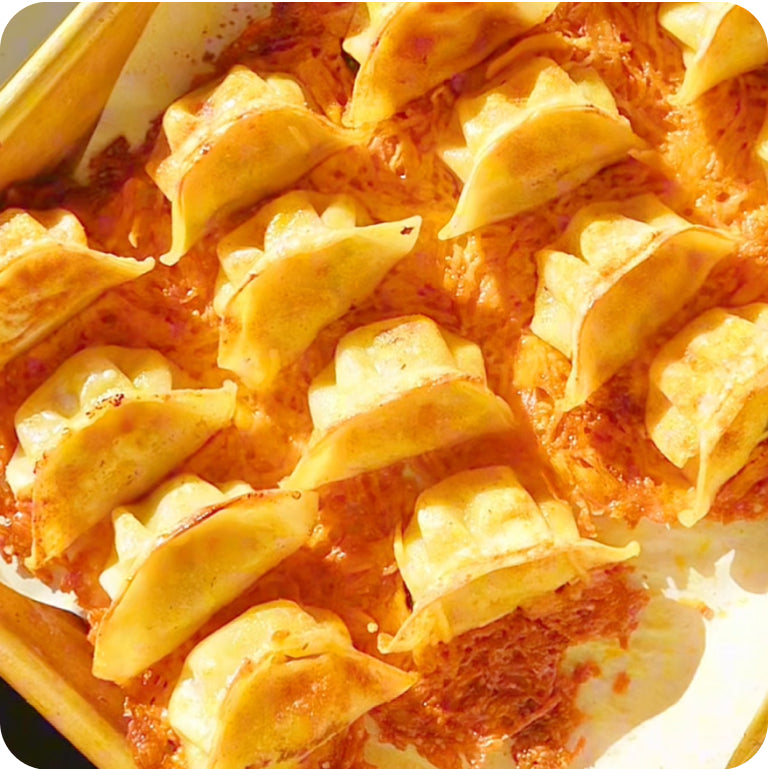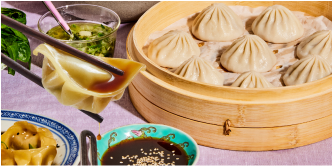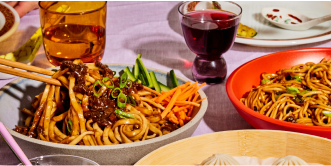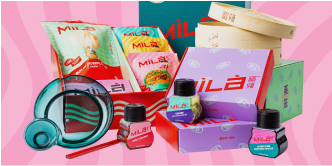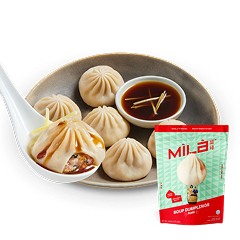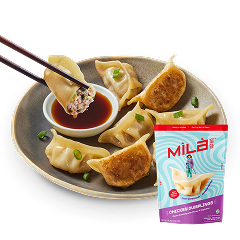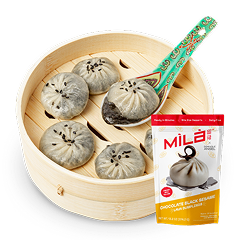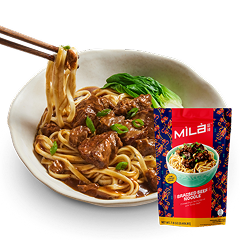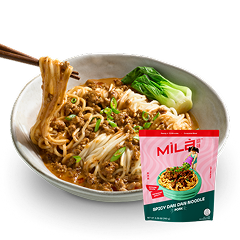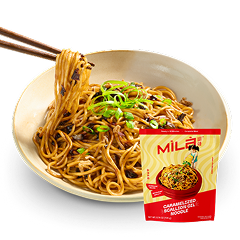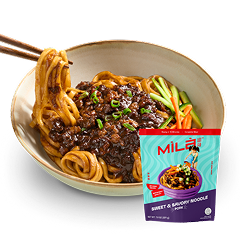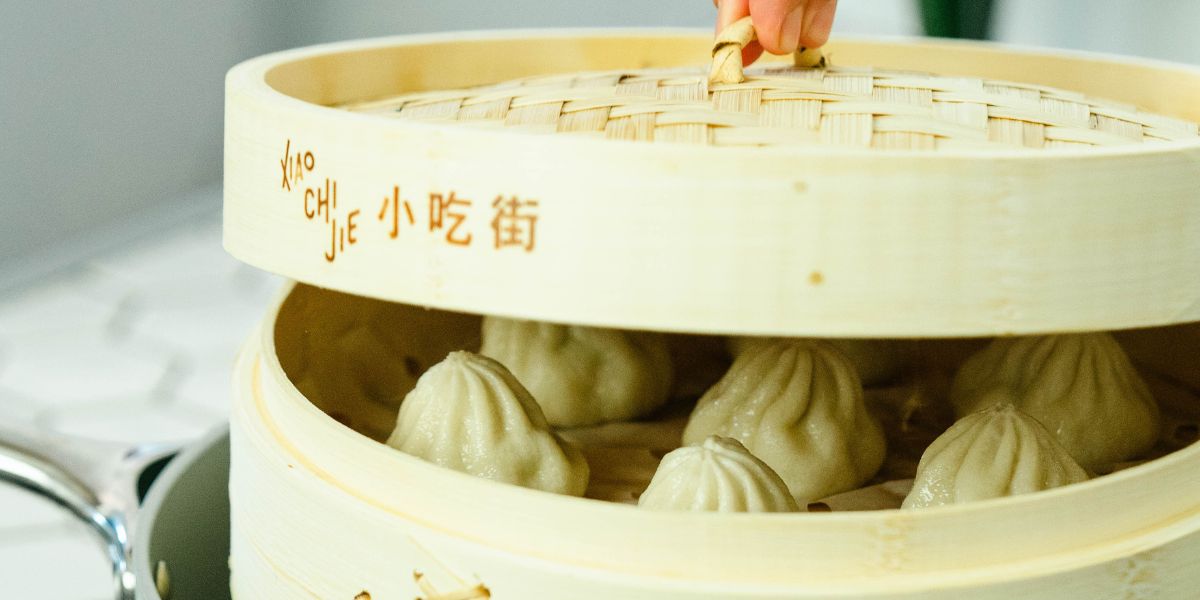
What Is Xiao Long Bao? History, Origins, and How to Eat Them
We’ve talked a lot in the past about our love for xiao long bao (小笼包). After all, these soup dumplings are a few of our favorite things.
But what is xiao long bao exactly? It’s a type of soup dumpling that has meat and umami-flavored broth wrapped in dough, but there’s more to it than just the sum of its parts. Let’s explore the anatomy of the humble xiao long bao, plus how it came to be and how we make them available anywhere.
What Is Inside Xiao Long Bao?
Magic!
However, in addition to magic, there’s also a perfectly blended ball of juicy meat—like pork, chicken, or a blend of pork and shrimp—and seasonings. Each soup dumpling also includes a large pool of broth that fills your whole mouth with the warm, comforting embrace of umami.
This entire package is wrapped up in a supple, delicately thin dumpling wrapper that’s easy to bite into without giving way during the cooking process.
Is Xiao Long Bao a Dumpling?
Yes, XLBs are a type of dumpling. While they’re typically cooked like other types of steamed dumplings, we’ve also seen some people pan-fry them and serve them up with a chili crunch and finely chopped scallion in a few more creative recipes.
Is Xiao Long Bao Dim Sum?
Yes, xiao long baos are dim sum. Much like other types of dim sum, they’re traditionally enjoyed for breakfast or brunch alongside a steaming cup of tea.
However, because xiao long bao originated further north, it took a while for them to earn their spot at the proverbial dim sum table in Guangdong where it originated. Within recent decades, they’ve become a more common sight on standard dim sum and Chinese restaurant menus as people have discovered just how fun it can be to get their XLB on.
How to Eat Xiao Long Bao
There are a few different ways to eat soup dumplings, but none of them involve popping the whole thing directly into your mouth—unless you like burning your whole tongue. To eat soup dumplings like a pro, we recommend choosing your own adventure with one of these three options:
How Xiao Long Bao Is Made
For the traditional process, most chefs start by making a bouncy, chewy dumpling dough and rolling it out into small, thin discs. They’ll also make a broth ahead of time using a blend of bones and gelatin and then cool it until it becomes a solid aspic.

This mix of gelatinized broth is combined with a juicy meatball and some aromatics like scallions and ginger. Then, the dumpling maker will wrap the contents up in the dumpling dough with all the skill and love of an experienced grandma and either freeze them for later use or start steaming them right away.
As for us, we’ve found a way to modernize the process while still using the same classic recipe.
When we make our xiao long bao at MìLà, we typically make our dough separately and pass it through a machine to ensure we get the same delicately supple results every time. From there, we follow the same process our families have been following for years.
After we’ve wrapped up our dumplings, we use a state-of-the-art nitrogen cooling tunnel to flash freeze them. However, that’s just the first method we use to keep them frozen. We also ship them with several layers of insulation and five pounds of dry ice to keep your soup dumplings from developing unhealthy attachment issues by sticking together.
These steps we take are all part of our melt-free guarantee. However, if your dumplings do somehow melt during transit, we’ll replace your order, no questions asked.
History of Xiao Long Bao
The Humble Beginnings
Supposedly, the history of soup dumplings has a few possible starting points. Legend has it that an emperor or other Chinese noble was traveling along the Yangtze River by boat and telling dumpling-lover he met about the xiao long bao he’d tasted in what is now a neighborhood in Shanghai.
Another Possible Origin Story
While the imperial legend is a fun story, one of the possible realities is even more inspiring. They’re still thought to have originated in Shanghai, at a time where steamed buns were all the rage and practically every corner had someone hawking them to the hungry masses.
Supposedly, a restaurant owner in the Nanxiang area of Shanghai came up with the idea for these “little basket buns,” as the name directly translates. Because they were filled with aspic instead of just being another bun with a plain meat filling, these soupy wonders became an instant hit with early tasters.
From there, their reputation spread by word of mouth and they became popular throughout central and southern China, with dumpling shops all throughout the region in the late 19th and early 20th centuries.
Spread Across the Diaspora and Beyond
In the years following the Chinese Civil War, many people—including those with XLB recipes of their own—fled to Taiwan and opened some of the first steamed dumpling restaurants to feature soup dumplings as a main menu item. As they gained popularity in Taiwan, they continued to spread further and further abroad as the diaspora took their recipes with them to other countries.

Global Souper-Stardom
Over the last decade, the humble XLB has grown from something you only see on the most OG dumpling shop menus to a phenomenon that you’ll find in some of the trendiest restaurants.
The internet is partially to thank for this. However, we believe that people also just know a good dumpling when they taste one.
We’re speculating here, but we also think we may have had something to do with the soup dumpling’s rise to international popularity as a Chinese comfort food. After all, having a bag of MìLà soup dumplings makes it easier to satisfy your soup dumpling craving, even if you don’t live near a dumpling shop or a grocery store that sells them.
We ship our dumplings anywhere in the US. Whether you live in New York City or Chugwater, Wyoming, we can deliver frozen soup dumplings that you can have on hand for when those late-night cravings strike.


